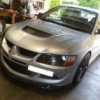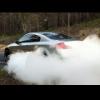PowerFC: Some DIY tuning comments please
Announcements
-
Similar Content
-
Latest Posts
-
By Watermouse · Posted
Hey guys, Just thought it might be of interest to owners of the RB25 det NEO motor, that awesomeness Nitto are in the late process to produce an engine gasket kit by end of Jan 25. I think obviously there will be an 25det kit too. cheers, Ian -
Shortly after I do the usual full exhaust/ fmic/fuel pump/ R33 turbo and still get flogged at the lights by i30Ns
-
By joshuaho96 · Posted
Bumping this thread yet again, has anyone ever tried putting yet another vacuum regulating valve on the hose that goes between the turbo inlet? Something local owners have mentioned is the Radium breather pipes de-restrict the valve cover but it actually produces an undesirable outcome in practice, way too much air is sucked out of the crankcase and a ton of oil comes with it as well. As far as I can tell the PCV diaphragm in these modern euro wet sump performance engines is active during boost as well, there's just a check valve to block boost from entering the valve cover and crankcase as there's no inherent check valve function in these diaphragm-type valves. Hopefully I'll be able to try some of this out soon. The Volvo XC90 4.4 V8 has a nice external version of these things.
-








Recommended Posts
Create an account or sign in to comment
You need to be a member in order to leave a comment
Create an account
Sign up for a new account in our community. It's easy!
Register a new accountSign in
Already have an account? Sign in here.
Sign In Now